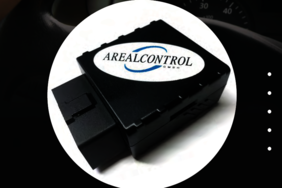This allows the tax office to see at a glance how the journeys are to be taken into account for tax purposes. But every journey with a truck for the transport of goods, for example, with a permissible total weight of between 2.8 and 3.5 tonnes, must also be documented by keeping a logbook. However, the classic logbook has one major disadvantage: journeys must be entered by hand, which increases the risk of errors or entries being simply forgotten. To make the tedious, detailed work a relaxing side issue, there are a number of digital logbooks in app form that create the electronic logbook more or less automatically. Switching to an electronic logbook is particularly worthwhile in vehicle fleet management. Logbook apps that comply with the standards and requirements of the tax office save time and save stress. Because by consistently using the app, users no longer have to worry about errors creeping into the entries and the records therefore not being accepted by the tax office.
How electronic logbooks work
As a rule, all logbook records work in a similar way: They track the journey including time, speed, duration and mileage. This information can be assigned to a reason for the journey. Products with an OBD connector can also read out status information about the vehicle, such as driving style or fuel consumption.
Depending on the system used, journeys are recorded in three different ways:
Permanently installed recording devices that record the vehicle's data and GPS location.
Plug-in and unplug-in OBD connectors (on-board diagnostics) for telemetry data and GPS location.
Data is recorded using mobile GPS on a smartphone
Electronic logbook: recognition by the tax office
The most important feature for an electronic logbook to be recognized by the tax office is GoBD conformity (principles for the proper management and storage of books, records and documents in electronic form). This requires the following:
The data is obtained directly from the vehicle. The documentation is tamper-proof.
The recording and evaluation is legally secure.
The recording is seamless.
Whether the tax office accepts an electronic logbook depends on the correct use of the user. Subsequent modifications to tax-relevant data must be excluded or at least be completely traceable for the tax office.
Tax office compliant: Electronic logbook from Arealcontrol with app
The electronic logbook with app from Arealcontrol has been in use by several hundred companies and thousands of vehicles since 2008 and is regularly recognized by the tax office. The logbooks in large fleets and vehicle pools can be created clearly, supplemented and saved as a PDF download. The recording of all trips can be conveniently managed in the online portal. The tax saved, which results from the taxation of the monetary benefit according to the flat rate tax of 1%, is between 1,800 euros and 5,000 euros, depending on personal income and tax rate as well as the list price of the company car. The electronic logbook from Arealcontrol meets the requirements in Germany, Austria, Switzerland, Belgium, the Netherlands, Portugal and many other European countries. Contact us!
